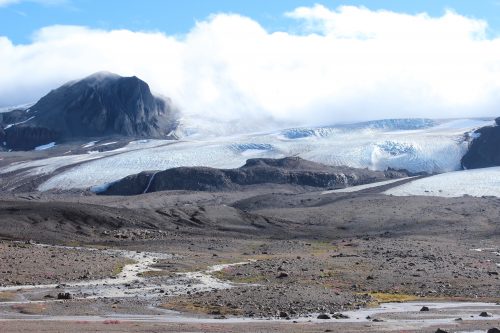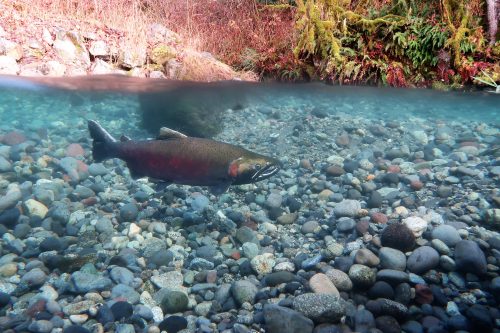Melting glaciers will have mixed effects on Pacific salmon
March 12, 2020
Alice Bailey
907-474-5350
University of Alaska Fairbanks associate professor Anne Beaudreau, a co-author of the paper, said it’s important to analyze the relationship between salmon and glaciers.

“Glaciers are melting and retreating at really fast rates. Ninety-five percent of Alaska glaciers are retreating, and that’s dramatically changing habitats for salmon," Beaudreau said. "Glaciers throughout the range of Pacific salmon are expected to lose as much as 80 percent of their ice volume by 2100."
This is the first study to look at the entire distribution of Pacific salmon and directly connect physical changes from glaciers melting and retreating with the future of the several species.
“As we started to dig into it, we realized that this is a hugely complex subject,” Beaudreau said. “People want to know if glaciers melting will be good or bad for salmon. It’s not so easy to say. There are conditions that will benefit salmon and there are conditions that will make their habitat less hospitable.”
The impacts will vary depending on the phase of glacial retreat, the species of salmon, the specific characteristics of different watersheds and the life stage of the fish.
For example, glaciers in parts of Glacier Bay, Alaska, are in the early stages of retreat on a geological time scale, and many now terminate on land. The edge of the ice is scouring out new river channels, which will open up more salmon habitat. In the second phase of retreat, the river channel becomes more stable and cool glacial water could buffer warmer waters in nonglacial tributaries.

However, the study illustrates how the later stages of glacial retreat could potentially harm salmon as the ice and meltwater disappear.
“Reduced water flow and warmer temperatures cause a lot of physiological stress for salmon,” Beaudreau explained. “For example, if you get a lot of fish on the spawning grounds and low river flows, salmon could breathe up the oxygen in the water more quickly, leading to fish kills, as we’ve seen in some Southeast Alaska streams.”
According to the study, salmon management may need to adapt to changes in watersheds and salmon populations. Monitoring programs will need to track rapid changes in these systems.
“This paper lays out what we know and, more importantly, what we don’t know, which should help focus future research efforts,” Beaudreau said.
The researchers also stress the importance of salmon conservation. Seeing how glaciers are changing “might allow people to be more proactive in thinking about the areas we might want to protect that have salmon in them now and may have salmon colonizing them in the future,” said Beaudreau.
The Gordon and Betty Moore Foundation funded the research through the Salmon Science Network Initiative.
ADDITIONAL CONTACTS: Anne Beaudreau, 907-796-5454, abeaudreau@alaska.edu.


